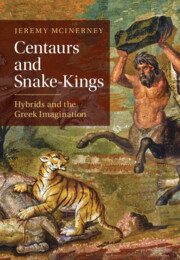Book contents
- Frontmatter
- Dedication
- Contents
- List of Figures
- Preface
- Acknowledgments
- Spelling and Orthography
- 1 Introduction: Encountering the Sphinx
- 2 ‘Welcome to Athens’: Theories of Hybridity
- 3 Hybrids around the Corrupting Sea
- 4 Hybrids, Contact Zones and Margins
- 5 Heads or Tails: Gorgons, Satyrs and Other Composites
- 6 Centaurs and Other Horses
- 7 Snakes and the Perils of Autochthony
- 8 Hermaphrodites and Other Bodies
- 9 Adynata, Ethnography and Paradox
- 10 Conclusions
- Bibliography
- Index
2 - ‘Welcome to Athens’: Theories of Hybridity
Published online by Cambridge University Press: aN Invalid Date NaN
- Frontmatter
- Dedication
- Contents
- List of Figures
- Preface
- Acknowledgments
- Spelling and Orthography
- 1 Introduction: Encountering the Sphinx
- 2 ‘Welcome to Athens’: Theories of Hybridity
- 3 Hybrids around the Corrupting Sea
- 4 Hybrids, Contact Zones and Margins
- 5 Heads or Tails: Gorgons, Satyrs and Other Composites
- 6 Centaurs and Other Horses
- 7 Snakes and the Perils of Autochthony
- 8 Hermaphrodites and Other Bodies
- 9 Adynata, Ethnography and Paradox
- 10 Conclusions
- Bibliography
- Index
Summary
This chapter addresses the need for clarity of definition and identifies the various fields in which hybridity operated in the Greek world. Recent work in monster theory emphasizes the role of monsters in policing the borders of what is normative. Monsters have repeatedly been interpreted as threats to the order created by classification. Hybrids are better understood not as threats to order, but as expressions of anomaly. As a mode of cultural production hybrids are a means of coping with that which defies neat classification. This may veer towards the monstrous, as in the case of the demonic female figure, the gorgon, but equally it can tend towards the curious and the wondrous, like Pegasos alighting at the Peirene Fountain in Corinth or the horses of Achilles grieving for the death of Patroklos. In trying to understand how and why the Greeks generated hybrids in their mythology it may seem that we are putting the Greeks on the psychiatrist’s couch, but Freud’s conception of the Uncanny sheds some light on how hybrids function. They represent the challenge of the anomalous.
Keywords
- Type
- Chapter
- Information
- Centaurs and Snake-KingsHybrids and the Greek Imagination, pp. 24 - 56Publisher: Cambridge University PressPrint publication year: 2024



